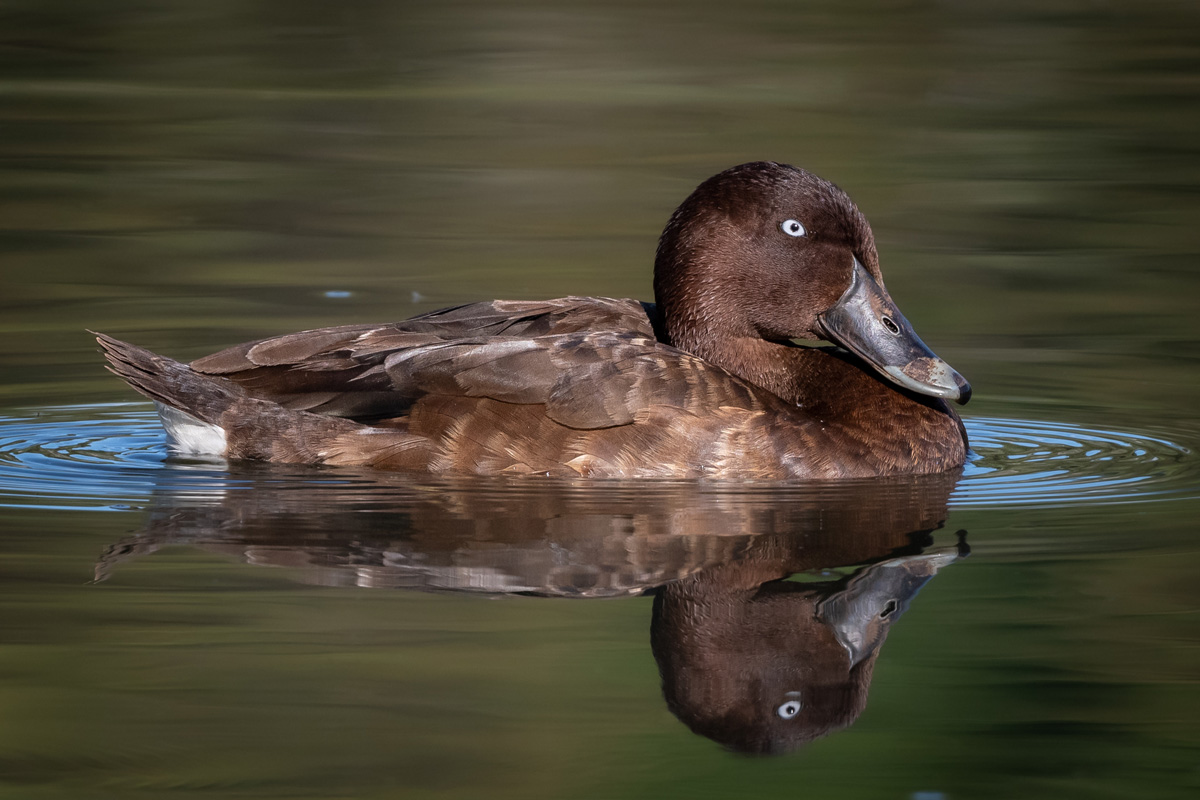
4 minute read
BLACK DUCKS IN DANGER
The simple pleasure of feeding ducks in Hobart is having tragic consequences for our native ducks. Story Jason Graham, photos Helen Cunningham.
Tasmania is home to 11 native duck species. Some are full-time residents, others are occasional visitors and can be a challenge to find.
Hobart is home to some of the more common native duck species, including the treenesting Australian wood duck, the elegant Pacific black duck and the handsome chestnut teal.
We are also visited by rarer species like the Australasian shoveler with their massive bills, the oddly-named hardhead and the tiny grey teal. The best place to go duck watching is Waterworks Reserve, but remember, native ducks can be quite shy, so a pair of binoculars is recommended.
Unfortunately, the most common species of duck in the Derwent Estuary is the introduced mallard. Mallards are native to the Northern Hemisphere, and have been introduced around the world as livestock for their meat and eggs as well as being kept as pets.
Being a domestic animal with many different breeds, mallards can look very different from each other. Mallards are bigger and more aggressive than native ducks, and when there is a stable food and water source – bread, lettuce, oats, tubs of water – their numbers can explode.
This is terrible news for our smaller, more timid native ducks. It doesn’t take long for mallards to push out the smaller natives, who can’t compete with the size and numbers of mallard ducks. While some of the mallards in Hobart may be escapees, the majority have been cruelly and illegally dumped.
The best thing we can do to protect our native ducks is to not feed ducks.
Feeding ANY kind of food to ducks is harmful. No human food can beat the natural diet of invertebrates and plants that ducks feed on while dabbling or diving, and swapping bread for greens still supports populations of dumped domestic ducks.
Even simply putting out a tub of water may seem like a harmless way to help ducks, but the only species who benefit from this are mallards, who prefer to stay in their local area and essentially take it over.
Native ducks on the other hand simply fly away if they’re thirsty or hungry. It’s important to remember that the majority of ducks being fed are dumped domestic ducks, and feeding these dumped pets encourages people to continue to dump unwanted or excess ducks.
The belief is that most dumpers are leaving ducks in places where there are already ducks being “looked after” by locals. By feeding ducks, we are giving people permission to dump more.

The biggest problem with having lots of domestic mallards in and around Hobart is the threat they pose to the Pacific black duck. Mallards and Pacific black ducks are closely related and can interbreed easily, which results in lots of fertile hybrid offspring.
Crossbreeding is very common, with larger male mallards skipping the courtship rituals of our smaller black ducks by simply forcing themselves on our native females. Some Pacific black duck/mallard hybrids are easily spotted by their bright orange legs, blotchy bills or larger bodies, but many of the traits are subtle and take practice to identify.
Sadly, it is becoming harder and harder to spot genetically pure Pacific black ducks in the Derwent Estuary and many other Tasmanian waterways. In places like the Royal Tasmanian Botanical Gardens and New Town Rivulet, it’s almost impossible.
This mallard hybridisation (cross-breeding) has resulted in the near-extinction of many duck species around the world. In New Zealand, the problem is so widespread native Pacific black ducks have almost been completely replaced by hybrids.
Pacific black ducks are now rare on Macquarie, Lord Howe and Norfolk islands due to mallard cross-breeding. Around the world, the mallard hybridisation problem is always more severe on islands. The fact Tasmania is smaller than New Zealand is very concerning for the future of our Pacific black ducks.
To best look after our native Tasmanian ducks, we need to enjoy them by identifying them, learning about them, and by simply watching them going about their business.
I guarantee that enjoying ducks without hurting their chances of survival by feeding them is much more fun!
The Pacific Black Duck Conservation Group is a volunteer Landcare group dedicated to the conservation of the Pacific black duck in Tasmania and raising awareness about our native duck species. Follow us on Facebook and Instagram.
To learn more about native ducks in Hobart visit hobartcity.com.au/ducksofhobart







